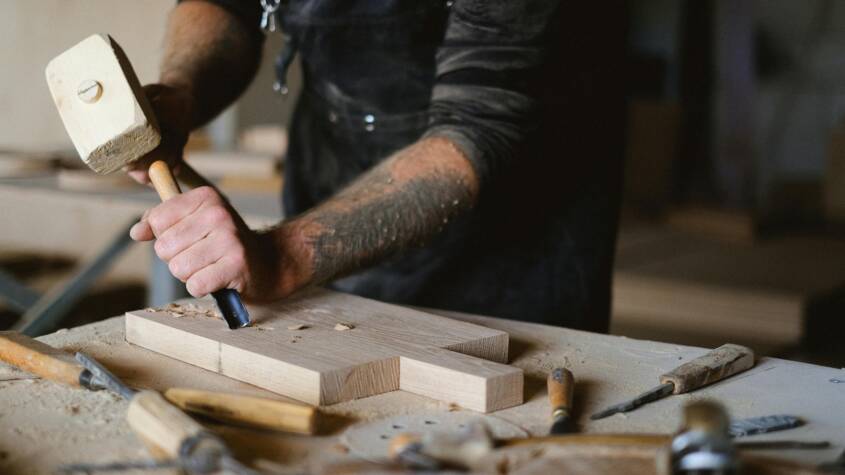
The roofing hammer is a specialized tool designed to make shingling easier and more efficient. It incorporates a dual-function design, combining a hammer and a claw that simplifies the installation of roofing materials. Many professionals rely on this tool for its precision and ease of use, which can significantly enhance productivity on the job site.
Understanding the features of a roofing hammer can help anyone in construction or DIY projects to select the right tool for their needs. With a weighted head and a comfortable grip, this hammer provides both the power needed to drive nails and the finesse required for delicate work. Its unique design can lead to better results and a smoother workflow for roofing tasks.
As roofing projects demand a high level of accuracy and strength, a roofing hammer proves to be an invaluable addition to any toolkit. Familiarity with this tool not only boosts efficiency but also promotes safety and effectiveness in roofing applications.
Types of Roofing Hammers
Various types of roofing hammers are available, each designed for specific tasks. Understanding their unique features helps in selecting the right tool for roofing projects.
Shingler’s Hammer
A shingler’s hammer is specialized for installing roofing shingles. It typically features a flattened head on one side for driving nails and a claw on the other for removing old shingles. The handle is often shorter than other hammers, allowing for better maneuverability on roofs.
Shingler’s hammers often have a rubberized grip for comfort and reduced vibration. This enables contractors to work efficiently, even during prolonged use. The weight of the hammer is balanced to provide adequate force without causing fatigue.
Framing Hammer
The framing hammer is heavier than a shingler’s hammer and is designed for more robust tasks. It has a longer handle, which provides increased leverage for driving larger nails into wood. This makes it suitable for framing roofs, adding structural integrity to roofing projects.
These hammers typically feature a milled face, which helps to grip the surface of the nail, reducing slippage. The unique design allows for efficient nail driving, crucial when constructing or repairing structures. The framing hammer is essential for a variety of heavy-duty applications beyond roofing.
Claw Hammer
The claw hammer is a versatile tool commonly used in roofing and general construction. It has a flat face for driving nails and a claw for removing them. While not as specialized as the shingler’s or framing hammer, it is more widely used for various tasks.
Claw hammers come in different sizes and weights, making them suitable for numerous applications. They typically have a wooden or fiberglass handle, combining durability with comfort. This hammer is ideal for small repairs and adjustments on the roof.
Features and Functions
Roofing hammers are equipped with various features that enhance their functionality and efficiency. Understanding these elements can help users make informed choices.
Hammer Head and Strike Face
The hammer head of a roofing hammer is typically made from durable materials such as steel, ensuring longevity. The strike face is designed to be flat and wide, providing maximum impact on nails. This feature minimizes the risk of bending nails and maximizes driving power.
Some hammers also feature a textured surface on the strike face, helping to grip nails better. This design can reduce slippage during use, allowing for more precise work. The weight of the hammer head varies, influencing the force applied with each strike, making heavier models suitable for harder materials.
Magnetic Nail Starter
Many roofing hammers include a magnetic nail starter. This feature allows for one-handed nail placement, which is especially useful when working in tight spaces or on steep roofs. The magnet holds the nail securely in position, reducing the risk of dropping or misplacing it.
The magnetic starter is often positioned at the front of the hammer head. This allows for quick access and convenience, enabling users to drive nails faster without needing to adjust their grip. This functionality enhances efficiency, making roofing projects less time-consuming.
Grip and Handle Design
The grip and handle design of a roofing hammer play a crucial role in usability and comfort. Most models come with rubberized grips to reduce hand fatigue and improve control. These grips help absorb shock, making it easier to handle the force generated by each strike.
Handle length can vary, affecting leverage and overall striking power. Some roofing hammers feature a curved handle, which can enhance ergonomics and wrist alignment. This design reduces strain over extended use, allowing for greater precision in roofing tasks.
How Experts in SEO Service in India Utilize Data Analytics for Predictive SEO Strategies
Though it sounds like a large and complex term, data analytics is basically only a means o…










